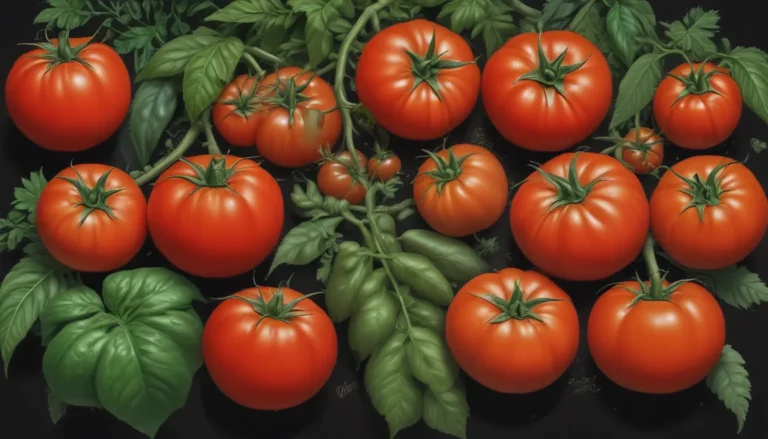Ultimate Guide to Dividing Perennials: Everything You Need to Know

Are you a garden enthusiast who loves to see your plants thrive year after year? Perennials are the answer! While annuals may catch your eye at the nursery with their vibrant colors and enticing scents, perennials steal the show with their longevity, reliability, and low maintenance nature. However, to ensure these plants continue to flourish, dividing them is key. In this comprehensive guide, we will explore the reasons for dividing perennials, the best time to do so, how to divide them, and which plants are ideal candidates for division. Let’s dive in and discover the secrets to successful perennial gardening!
Discover the Benefits of Dividing Perennials
Perennials are resilient plants that can thrive for years with the right care. However, dividing them at the right time can unlock a multitude of benefits for both the plants and your garden. Here are five reasons why dividing perennials is a must-do task:
- Keep Excessive Growth in Check: Vigorous perennials can quickly outgrow their space, leading to overcrowding and diminished performance. Dividing them helps maintain their size while promoting healthy growth.
- Plant Protection: Dividing plants exposes and eliminates pests like insects and fungal diseases, protecting them from harm.
- Performance and Productivity: Overcrowded perennials may produce fewer blooms and exhibit stunted growth. Dividing them ensures they receive adequate nutrients for optimal performance.
- Keep the Neighbors Happy: Vigorous plants can hog resources, depriving neighboring plants of essential sunlight, water, and nutrients. Dividing ensures equal distribution of resources.
- Proliferation for a Polished Look: Dividing perennials allows you to propagate new plants cost-effectively, enhancing your garden’s design and providing a professional look to your plantings.
With these benefits in mind, it’s clear that dividing perennials is a win-win for both the plants and your garden’s aesthetics.
When to Divide Your Perennials
Timing is crucial when it comes to dividing perennials. Performing this task at the right time ensures minimal stress on the plants and increases their chances of thriving post-division. Ideal conditions for dividing perennials include cool, moist soil and warm air, typically found in spring and autumn. While most perennials do well with spring and fall division, some exceptions like bearded iris prefer division in summer. Keep the following tips in mind:
- Divide on a Cloudy Day: Choose a cloudy day for division to reduce stress on the plants.
- Avoid Dividing While Flowering: Wait until after flowering to divide your plants to allow them to focus their energy on root and leaf growth.
- Transplant in Spring and Fall: Spring and summer bloomers are best divided in the fall, while fall-blooming perennials should be split up in the spring.
- Establish New Plants in Advance: Prepare new planting locations before dividing your perennials to ensure a smooth transition for the plants.
Following these guidelines will help you divide your perennials successfully and set them up for a healthy growing season.
Step-by-Step Guide to Dividing Perennials
Before you get your hands dirty, it’s essential to lay the foundation for your divided perennials. Follow these steps to prepare your plants for division and ensure they thrive in their new homes:
- Determine Plant Locations: Before dividing, choose and prepare new locations for your plants, ensuring they have enough space and nutrients.
- Amend the Soil: Prepare the soil by double-digging, adding organic material, and improving drainage to provide optimal conditions for new plant growth.
- Moisten the Soil: Ensure the soil is well-moistened before division to ease the process and reduce stress on the plants.
Once you’ve laid the foundation, it’s time to dig in and divide your perennials. Follow these steps for a successful division:
- Establish the Drip Line: Identify the plant’s outer reach to guide your digging.
- Isolate the Clump: Use a shovel to loosen the root ball by cutting around the drip line.
- Release the Roots: Gently lift the root ball and loosen the roots to prepare for division.
- Separate and Replant: Divide the plant into sections, ensuring each new plant has a healthy root network and leaves. Replant promptly at the same depth as the root ball to promote successful growth.
By following these steps, you can divide your perennials with ease and ensure they thrive in their new homes.
Ideal Perennials for Division
Choosing the right perennials for division is crucial for successful propagation. Here are some common perennials that are ideal candidates for division:
- Aster
- Astilbe
- Bee Balm
- Black-Eyed Susan
- Canna Lilies
- Chrysanthemum
- Cranesbill
- Daylilies
- Hardy Fuchsia
- Hosta
- Lamb’s Ear
- Lily of the Valley
- Ornamental Grasses
- Phlox
- Purple Coneflower
- Red-Hot Poker
These perennials are well-suited for division and can thrive with proper care and maintenance.
Plants to Avoid Dividing
While many perennials benefit from division, some plants may not respond well to this process. Here are some perennials that you should avoid dividing:
- Baby’s Breath
- Butterfly Weed
- Columbine
- Euphorbias
- Hellebores
- Japanese Anemones
- Perennial Lupines
These plants may not tolerate division well and may prefer other propagation methods for continued growth.
Dividing Rhizomes and Tubers
Rhizomes and tubers are unique perennials that require special care when dividing. Follow these guidelines for successful division:
- Rhizomes: Divide in summer or after flowering, cutting them into sections with roots and leaves.
- Tubers: Separate tubers in spring before planting, ensuring each new tuber has a section of the original stem and a bulbous growth bud.
By following these tips, you can divide rhizomes and tubers effectively and promote their growth in your garden.
Long-Lasting Beauty in Your Garden
Dividing your perennials is a simple yet effective way to enhance their growth and vitality. With the right timing, preparation, and care, your perennial garden will continue to thrive for years to come. By following the steps outlined in this guide and choosing the right plants for division, you can create a beautiful and healthy garden that will delight you season after season. Share your thoughts and experiences with perennial division in the comments below – we’d love to hear from you!
Remember, successful division of perennials requires careful planning and execution. By following the tips and steps provided in this guide, you can ensure your plants thrive and your garden flourishes with long-lasting beauty.
Cheers to healthy plants and a vibrant garden!





